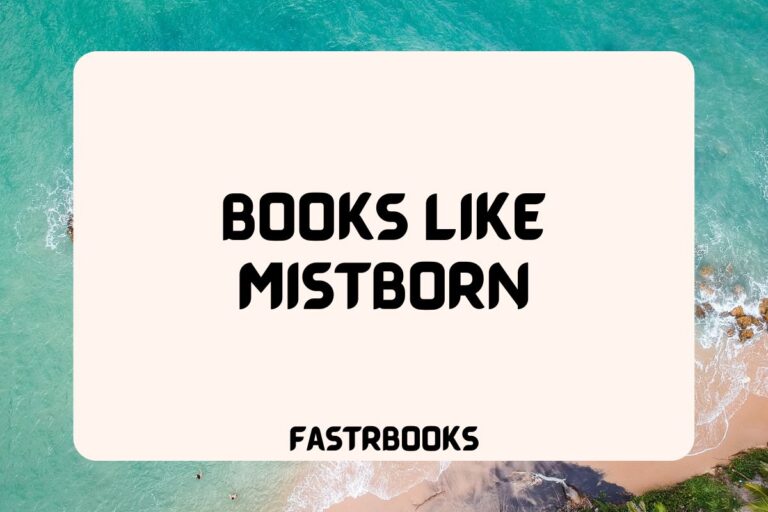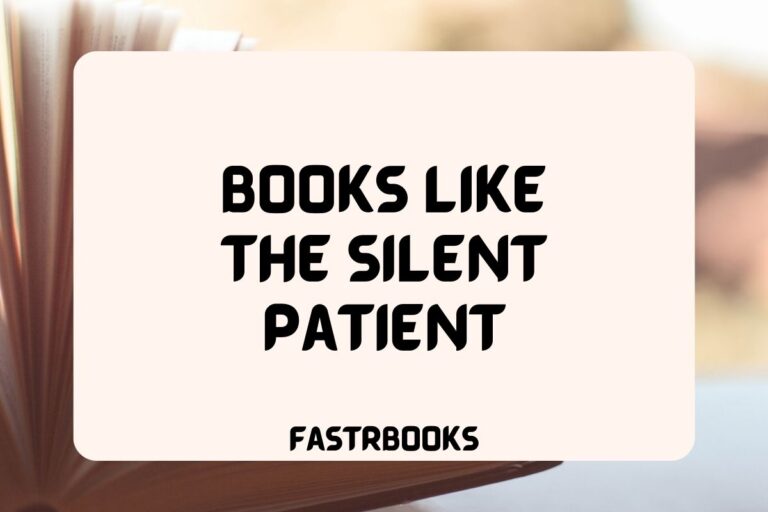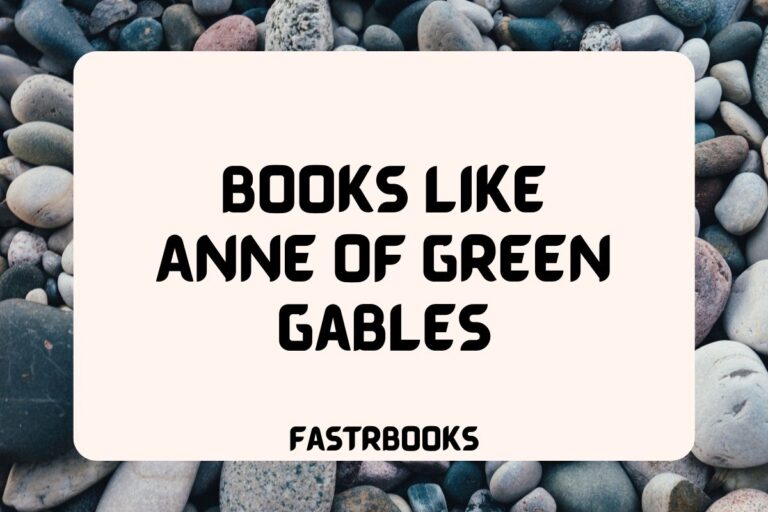17 Books Like The Outsiders by S.E. Hinton
Imagine a world where the struggles of adolescence, the complexities of friendship, and the stark realities of societal divisions collide to form a narrative that resonates with readers across generations. Such is the essence of S.E. Hinton’s timeless classic, “The Outsiders.” Published over half a century ago, this gripping tale continues to captivate audiences with its raw emotion and timeless themes.
But what happens when you’ve devoured every word, turned every page, and long for more stories that evoke the same feeling of connection and understanding?
Fear not, fellow book lover, for the literary landscape is vast and brimming with narratives that echo the essence of “The Outsiders.”
Join me on a journey as we explore a selection of books that embody the spirit of camaraderie, rebellion, and the quest for identity, offering a fresh perspective while paying homage to Hinton’s unforgettable masterpiece.
Let’s go.
Books Like The Outsiders
1. “That Was Then, This Is Now” by S.E. Hinton
This novel, also by S.E. Hinton, explores the lives of teenagers Bryan and Mark as they navigate the complexities of growing up and the challenges that threaten to tear their friendship apart. Set in the same universe as “The Outsiders,” it delves into themes of loyalty, change, and the harsh realities of growing up too fast.
The story is a compelling look at how relationships evolve and the difficult choices that come with maturity.
Major Similarities: Like “The Outsiders,” “That Was Then, This Is Now” focuses on the theme of friendship amidst societal and personal challenges. It is set against a backdrop of youth culture and the struggle for identity in a world that seems predisposed to violence and misunderstanding. Both novels share a gritty, realistic portrayal of teenage life, the impact of choices, and the concept of family beyond blood relations.
2. “Rumble Fish” by S.E. Hinton
“Rumble Fish” tells the story of Rusty-James, a teen who struggles to live up to his older brother’s reputation in a world filled with gang violence and personal disillusionment. The narrative explores themes of identity, the passage of time, and the longing for a place in a seemingly indifferent world.
Hinton’s vivid portrayal of Rusty-James’s internal and external conflicts offers a raw and introspective look at adolescence.
Major Similarities: Both “Rumble Fish” and “The Outsiders” offer a gritty exploration of youth gang culture and the quest for identity amidst chaos. They share a focus on complex family dynamics and the struggle to find a sense of belonging. Hinton’s evocative storytelling and character-driven narratives highlight the turbulence of teenage life and the impact of violence on young minds.
3. “The Chocolate War” by Robert Cormier
This novel follows Jerry Renault, a freshman at Trinity High School, who challenges the school’s cruel social dynamics by refusing to sell chocolates for a fundraiser.
The book critically examines themes of conformity, power, and individuality within the oppressive atmosphere of an all-boys school. Cormier’s stark portrayal of manipulation and peer pressure raises questions about morality and courage.
Major Similarities: “The Chocolate War” and “The Outsiders” both explore the themes of individual vs. group identity and the fight against societal pressures. They delve into the struggles of young protagonists who confront and challenge the status quo, facing both internal and external battles. The novels offer a raw look at the darker aspects of adolescence and the courage it takes to stand alone.
4. “Lord of the Flies” by William Golding
Set on a deserted island, “Lord of the Flies” tells the story of a group of British boys stranded after a plane crash and their descent into savagery and tribalism.
The novel explores complex themes such as the inherent evil within humanity, the loss of innocence, and the veneer of civilization. Golding’s allegorical tale is a profound commentary on society and human nature.
Major Similarities: Both “Lord of the Flies” and “The Outsiders” deal with groups of young individuals isolated from society, though in drastically different settings.
They examine how circumstances can strip away the layers of social conditioning to reveal the raw and primal aspects of human nature. The themes of conflict, camaraderie, and the struggle for power are prevalent in both narratives.
5. “Catcher in the Rye” by J.D. Salinger
This classic novel narrates the story of Holden Caulfield, a teenager from New York City, who, after being expelled from prep school, wanders the city dealing with issues of identity, loss, and belonging.
Salinger’s portrayal of teenage angst and alienation, along with a deep-seated desire for purity in a corrupted world, has resonated with readers for generations.
Major Similarities: “Catcher in the Rye” and “The Outsiders” both capture the essence of teenage rebellion and the search for self in the face of societal expectations. Each novel features protagonists who are critical of the adult world and struggle with the concept of growing up. Themes of isolation, the pain of loss, and the quest for identity tie the narratives closely together.
6. “A Separate Peace” by John Knowles
Set against the backdrop of World War II, “A Separate Peace” explores the friendship between Gene and Phineas at a New England boarding school.
The novel delves into themes of envy, rivalry, and the loss of innocence as the war’s shadow looms over the characters’ lives. Knowles captures the complexity of friendship and the transition from youth to adulthood with poignant clarity.
Major Similarities: Like “The Outsiders,” “A Separate Peace” focuses on themes of friendship, rivalry, and the transition to adulthood under extraordinary circumstances. Both novels examine the impact of external conflicts (war in one, societal violence in the other) on young men’s identities and relationships. The exploration of internal conflict and the moral dilemmas faced by the protagonists are central to both stories.
7. “Monster” by Walter Dean Myers
“Monster” is presented as a screenplay intertwined with diary entries from Steve Harmon, a Black teenager on trial for murder. The novel explores themes of identity, race, and the justice system, as Steve grapples with how he is perceived by society and himself.
Myers’ innovative narrative structure offers a gripping and thought-provoking look at prejudice and the complexity of human nature.
Major Similarities: Both “Monster” and “The Outsiders” address themes of identity and societal judgment, focusing on young protagonists who are forced into roles by their circumstances. The novels explore the concept of perception versus reality and the struggle of young men to define themselves amidst chaos and prejudice. The use of distinct narrative techniques to delve into the protagonists’ inner worlds adds a layer of depth to the exploration of these themes.
8. “We Were Here” by Matt de la Peña
“We Were Here” follows Miguel, a young man sent to a group home and then on a journey across California after a tragic incident. The novel explores themes of guilt, redemption, and the search for identity among a group of boys each battling their own pasts.
De la Peña’s writing captures the raw emotions and complex relationships that define the path to understanding and forgiveness.
Major Similarities: Like “The Outsiders,” “We Were Here” delves into the lives of young men on the fringes of society, struggling with their past and the concept of family. Both novels explore themes of redemption, the impact of choices, and the quest for a sense of belonging. The emotional depth and focus on character development parallel the introspective journey of the characters in “The Outsiders.”
9. “Speak” by Laurie Halse Anderson
“Speak” tells the story of Melinda Sordino, a high school freshman who becomes ostracized by her peers after calling the police at a party. As she struggles with the aftermath of a traumatic event, Melinda finds her voice and the strength to confront her pain.
Anderson’s novel is a powerful exploration of trauma, silence, and the journey to healing.
Major Similarities: While “Speak” and “The Outsiders” explore different aspects of the adolescent experience, both novels address themes of isolation, the struggle to find one’s voice, and the impact of societal judgment. Each narrative offers a deep dive into the internal conflicts faced by young individuals in their quest for identity and acceptance in a challenging world.
10. “Go Ask Alice” by Anonymous
This novel is presented as the diary of a teenage girl who falls into the world of drug addiction. The raw and honest entries detail her descent into despair, the impact on her family, and her attempts at recovery.
The diary format provides a poignant and unfiltered look at the struggles of adolescence, addiction, and the search for identity.
Major Similarities: Both “Go Ask Alice” and “The Outsiders” provide a gritty, realistic portrayal of the challenges faced by teenagers, including the search for identity and the struggle with personal demons. The emphasis on diary entries in “Go Ask Alice” and the first-person narrative in “The Outsiders” offer intimate insights into the protagonists’ thoughts and feelings, highlighting the universal themes of growth, choice, and the consequences of actions.
11. “The Perks of Being a Wallflower” by Stephen Chbosky
This novel, presented through a series of letters from Charlie, a high school freshman, to an anonymous recipient, explores themes of adolescence, trauma, and the journey to self-discovery.
Charlie’s introspective and sensitive perspective offers a deep exploration of friendship, love, and the struggle to fit in, while dealing with the echoes of a troubled past.
Major Similarities: “The Perks of Being a Wallflower” and “The Outsiders” both delve into the complexities of the teenage psyche, the importance of friendship, and the impact of past traumas on personal growth. The narratives explore the protagonists’ journeys towards understanding themselves and their places in a world that often feels alienating and harsh. The use of personal narratives (letters in “Perks” and first-person narration in “Outsiders”) creates a strong emotional connection with the reader.
12. “On the Come Up” by Angie Thomas
“On the Come Up” follows Bri, a young rapper who dreams of making it big to save her family from poverty, while also battling stereotypes and the challenges that come with fame.
Thomas’s novel is a powerful exploration of ambition, identity, and the struggle to remain true to oneself in the face of adversity and societal expectations.
Major Similarities: Like “The Outsiders,” “On the Come Up” explores themes of ambition, identity, and the fight against societal labels. Both novels feature protagonists who are determined to define themselves on their own terms, despite the obstacles they face. The focus on young individuals navigating complex social dynamics and personal challenges highlights the universal quest for recognition and self-acceptance.
13. “The Absolutely True Diary of a Part-Time Indian” by Sherman Alexie
This novel, based on the author’s own experiences, follows Junior, a Native American teenager who leaves his reservation to attend an all-white high school. The narrative combines humor and heartbreak to explore themes of identity, racism, and the struggle for a better life.
Alexie’s use of illustrations and a candid narrative voice offers a unique and impactful perspective on the challenges of adolescence.
Major Similarities: Both “The Absolutely True Diary of a Part-Time Indian” and “The Outsiders” deal with young protagonists confronting societal expectations and the search for identity in environments that are hostile or indifferent to their struggles. The themes of belonging, the impact of poverty, and the fight against stereotypes are central to both narratives. The blend of humor and gravity in addressing serious issues parallels the emotional range found in “The Outsiders.”
14. “All American Boys” by Jason Reynolds and Brendan Kiely
This novel alternates perspectives between Rashad, an African American teenager who is a victim of police brutality, and Quinn, a white teenager who witnesses the incident.
“All American Boys” explores themes of racism, justice, and the power of community activism. The authors tackle difficult conversations about privilege, violence, and the need for understanding and change.
Major Similarities: “All American Boys” and “The Outsiders” share a focus on the impact of violence and societal prejudices on young lives. Both novels explore themes of identity, the quest for justice, and the complexities of navigating a world divided by social and racial lines. The emphasis on multiple perspectives in “All American Boys” enriches the narrative, similar to how “The Outsiders” offers a deep dive into the lives and thoughts of its characters.
15. “Freak the Mighty” by Rodman Philbrick
“Freak the Mighty” tells the story of an unlikely friendship between Max, a large and kind-hearted boy with learning difficulties, and Kevin, a brilliant and physically disabled boy.
Together, they form “Freak the Mighty” and embark on adventures that challenge societal perceptions and their own limitations. The novel is a touching exploration of friendship, courage, and the power of imagination.
Major Similarities: Both “Freak the Mighty” and “The Outsiders” highlight the strength and resilience of friendships formed in the face of adversity. The novels address themes of societal judgment, the value of individual differences, and the quest for acceptance. The focus on the transformative power of relationships and the challenge of overcoming personal and societal obstacles links the narratives closely together.
16. “The First Part Last” by Angela Johnson
This novel tells the story of Bobby, a teenage father, as he navigates the challenges and joys of raising his daughter Feather on his own. Through flashbacks and present-day narratives, Johnson explores themes of responsibility, love, and the transition to adulthood.
The novel offers a poignant look at the realities of teenage parenthood and the power of unconditional love.
Major Similarities: “The First Part Last” and “The Outsiders” both delve into the theme of premature adulthood and the responsibilities that come with it. Both narratives explore the impact of significant life events on young individuals and the journey towards understanding and acceptance. The focus on the dynamics of unconventional families and the challenges faced by young protagonists links the stories together.
17. “The Giver” by Lois Lowry
Set in a seemingly utopian society where pain, suffering, and choice have been eliminated, “The Giver” follows Jonas as he is selected to inherit the position of Receiver of Memories.
As he receives memories of the world as it once was, Jonas begins to question the costs of his community’s conformity. Lowry’s novel is a profound exploration of freedom, memory, and the essence of humanity.
Major Similarities: While set in vastly different worlds, “The Giver” and “The Outsiders” both explore themes of societal norms, the value of individuality, and the courage it takes to stand against the status quo. Both novels present young protagonists who come to question the structures of their societies and face the challenges of breaking free from imposed identities. The journey towards self-discovery and the questioning of societal values are central themes in both stories.






